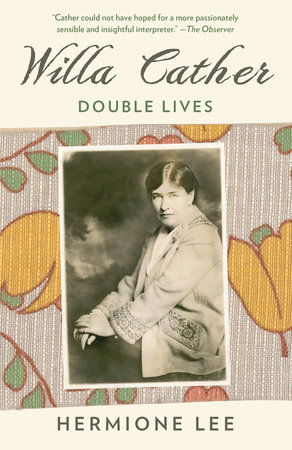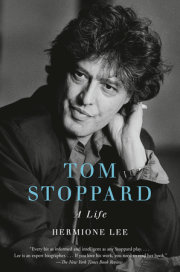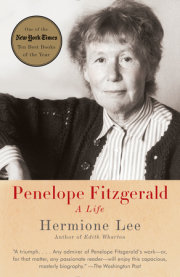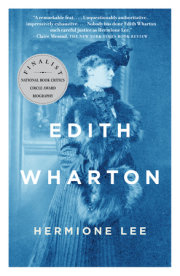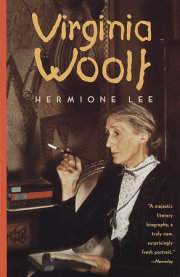1. Journeys
Soto! Explore thyself!
Therein thyself shalt find
The ‘Undiscovered Continent’ –
No Settler had the Mind.
--Emily Dickinson, c. 1864
Willa Cather said, late in life, that she seemed fated to send people on journeys. She was always getting letters from readers who had set off for Nebraska or the Mesa Verde, New Mexico or Quebec, in the footprints of her characters. In fact the managers of the Bishop’s Lodge Hotel at Santa Fé had done so well out of the Archbishop that they had offered her unlimited free accommodation. But, she added, she did not want to go back to the places she had written about; they had all changed. This suggests one of the paradoxes of Cather’s writing. In her life, her journeys, and her writing, she is an original, adventurous explorer, like the pioneers in the title of her early novel, energetically making her mark on an ‘undiscovered continent’. But she is also a historian; her imagination works through memory, distance, and loss. She translates her landscapes, and the figures in them, into landscapes of the mind.
This makes the journey in pursuit of Cather a complicated one. Since she died in 1947, her admirers have continued to retrace her tracks, westward from Virginia to Red Cloud, east from Lincoln, Nebraska, to Pittsburgh, and New York, down through the Southwest, across the ocean to Paris and Provence, and up to Canada and Maine and New Hampshire. They find recognizably impressive landscapes, but utterly transformed environments. Anyone writing on Cather also has to make journeys to numerous American libraries, to read the letters which survived her attempts to reclaim and destroy all her correspondence, and which her will ensured could not be quoted or published. Just as she wanted no visitors spoiling the places she had loved, so she wanted no tourists inspecting her life. Cather resists her pursuers: she would prefer to be an ‘undiscovered continent’.
A Cather pilgrimage – to her home town, for instance – can be interesting, but, like most literary pilgrimages, has ultimately not much to do with a reading of her novels. It is an inner, not an outer, journey that’s required. Certainly I found my own visit (my first to the mid-West) to the small, subdued crossroads town of Red Cloud, 130 miles west of Lincoln, a curious experience, full of visit impressions. Summoned by the noon-time siren to the beef and noodles diet of the Corral Café, I listen to an unflagging stream of local jocularity (very old lady with no teeth: ‘I’d have given him a piece a my mind cepn I wouldn have had none left’, and so on). On a wet Sunday evening, I watch well-behaved, overweight families consuming huge pizzas and cokes in the non-alcoholic Prairie Pizza, a large brown-carpeted room with wooden benches and tables down the sides and a big space in the centre. It has gold-framed paintings of Indian pow-wows, two pianos covered in wicker baskets of plastic flowers, a (real) old black Ford without wheels on a platform above the door; and on the end wall a large American flag surrounded by models of a plane, a car, a cross, and an Indian head-dress, captioned ‘First Americans’ Right to Worship – Right to be Free’. Driving out on mud roads to the little fenced-in French and Czech graveyards on the high farmland of the ‘Divide’, or to the 600 acres reclaimed by the Nebraska State Nature Conservancy to revert to ‘Willa Cather Memorial Prairie’, I can hear woodlarks calling over miles of space on a warm April evening (two weeks after a blizzard, with snow still on the low slopes). Crossing the Kansas–Nebraska border, I see two wooden signs on the long empty road (one reading ‘Leaving Kansas – Come Again’, the other ‘Nebraska – The Good Life’). I am shown the large ugly bungalow built by ‘Ántonia’s’ grand-daughter, and the neatly reconstructed ‘depot’ building where no more trains come in. I hear from the waitress in the Palace Bar about the alcoholism and hard times of the local farmers, the merits of the death penalty and the lack of anything to do in Red Cloud since the ‘show building’ closed down. I am told that an aged local used to refer to Cather as ‘that morphee-dite’, or that when the Czech descendants promised to lay on a Czech picnic for the ‘Cather Spring Conference’ they offered to dress in national costume and provide Kentucky Fried Chicken. And then I go into the back of the red-brick Garber Bank, a tall incongruity in a street of one-story food marts, now the ‘Willa Cather Pioneer Memorial Museum’, to read, in the wake of European and Chinese and American researchers, letters that Cather didn’t want read. I couldn’t help feeling the extraordinary contrast between the immense landscape and the little town, or noticing, even at a glance, the signs of cultural assimilation and stagnation Cather had anticipated. But being led by kindly guides around the ‘Cather Childhood Home’ or the ‘Cather Memorial Prairie’ did not unlock, though it might illustrate, ‘Old Mrs Harris’ or
My Ántonia, any more than a trip to the Mesa Verde could explain
The Professor’s House.It is another of the contradictions of Cather’s work that although she draws intensely on her personal experience, her fiction is not satisfactorily accounted for in biographical terms. Like the image of the rock which she places at the centre of many of her books, she is a resistant subject, even an obstructive one. When you set out to write about her, you feel she would not have liked what you are doing, and would not have liked you either. At times, reading yet more of her grumpy repudiations of the modern world, the dislike is reciprocated. And she does not invite interpretation. Her apparent simplicity, her authenticity and authority, her deep connection to places, her specific cultural histories, make her look straightforward and available. But she is no public monument, no laureate of rural America. The journey for Cather must be through her language, her obsessions, and her evasions; like the title of one of her best books of stories,
Obscure Destinies, she makes an ‘obscure’ destination. The memorial signposts helpfully put up all over ‘Catherland’ by the State of Nebraska are misleading markers.
The Cather trail, forty years on, is well trodden, though not noticeably by British readers: like other great women American writers of the twentieth century such as Ellen Glasgow, Flannery O’Connor or Eudora Welty, Cather has never been widely read or much studied in the UK. In America, since
One of Ours won the Pulitzer Prize and made her famous in 1922, she is high-school reading, alongside Twain, Hemingway and Thoreau. Like Robert Frost (whom she greatly admired and was influenced by) her fame centres on her celebration of rural America and her nostalgia for pioneering values. Scott Fitzgerald, for instance, who wrote
The Great Gatsby under the spell of
A Lost Lady, could nevertheless joke about her ‘History of the Simple Inarticulate Farmer Turned Swede’. Though she fell out of favour with the New Critics of the 1930s, who found her reactionary and escapist, and though she is regarded as old-fashioned and unexciting by a contemporary American novelist such as Philip Roth, she still, like Frost, has a devoted popular following. Cather hagiography is thriving in Lincoln, Nebraska, culminating last year in James Woodress’s huge, adulatory biography. And, within the last ten years, feminist criticism has launched some vigorous raids on Cather territory, resulting in inspired new readings (notably by Sharon O’Brien and Judith Fryer). Less subtle attempts than theirs, however, to appropriate Cather as a spokesperson for feminism, in particular for lesbian feminism, run into as many difficulties as readings which identify her as a Catholic, an agrarian, or a romantic. She evades identification, and resembles no one else.
Cather is unique, first of all, in being the only woman of her time to have appropriated a ‘great tradition’ of male American writing. When she turns herself into male narrators and gives them Virgil to read, when she calls her first Nebraskan novel after Whitman’s poem of pioneers, she is not only acting out a desire to transcend, imaginatively, expected sexual roles (though she
is doing that); more impersonally, she is intervening in a masculine language of epic pastoral. The western frontier was a man’s world, subjected to masculine pioneering and male speech. In the Whitman poem of 1865, the penetration of the west is erotically apotheosized as an all-male Olympiad:
O you youths, Western youths,
So impatient, full of action, full of manly pride and friendship,
Plain I see you Western youths, see you tramping with the
foremost,
Pioneers! O pioneers!
The woman (‘O you mothers and you wives!’) are following along behind the pack-horses. Figuratively speaking, they are the earth itself, either as a maiden lying ready for productive defloration (‘we the virgin soil upheaving’) or as ‘the eloquent dumb great mother’ in another of Whitman’s pioneering poems, ‘A Song of the Rolling Earth’. Or else they give inspiration as the Muse/flag, at once heavenly and martial:
Raise the mighty mother mistress,
Waving high the delicate mistress, over all the starry mistress,
(bend your heads all,)
Raise the fang’d and warlike mistress, stern, impassive,
weapon’d mistress
Pioneers! O pioneers!
In the later literature of immigrant heroes – Frank Norris’s
The Octopus, or Upton Sinclair’s
The Jungle, Ole Rölvaag’s Norwegian epic trilogy, or William Carlos Williams’s novel of immigrants in New York,
White Mule – the female characters are always depending and subsidiary. Tough though they had to be, in life as in literature, the struggle for the frontier is essentially a male story, with the land as a woman (or a female troll, in Rölvaag’s
Giants in the Earth) who must be penetrated and fertilized.
The activity of the pioneers, and the voice of their poet, is rendered in muscular, strenuous language:
"The great poem of the West. It’s that which I want to write. Oh, to put it all into hexameters; strike the great iron note; sing the vast, terrible song; the song of the People. . . Ah, to get back to that first clear-eyed view of things, to see as Homer saw, as Beowulf saw, as the Nibelungen poets saw. The life is here, the same as then; the Poem is here; my West is here; the primeval, epic life is here. . . It is the man who is lacking, the poet."
Norris’s virile, ambitious language intends to master the ‘vast, terrible’ material of formless American space: the task requires the poet to be ‘the man’. This male conquest of space is seen by Charles Olson (writing brilliantly on Melville, in 1947, the year Cather died) as the essential drive of American writing:
"I take SPACE to be the central fact to man born in America. . . . It is geography at bottom, a hell of wide land from the beginning. That made the first American story [Parkman’s]: exploration. . . . Some men ride on such space, others have to fasten themselves like a tent stake to survive. As I see it Poe due in and Melville mounted. They are the alternatives. . . . Space has a stubborn way of sticking to Americans, penetrating all the way in, accompanying them. It is the exterior fact. . . . We must go over space, or we wither."
All the great writing of nineteenth-century America could be read, in Olson’s terms, as different ways of mastering space. Melville’s Ahab tries to blast through it, crash through the wall of impenetrable whiteness. Cooper’s pioneers, Twain’s Huckleberry Finn, adventure into it; Hawthorne’s puritans enclose themselves in rigid self-protective communities; Poe buries himself under it, in what D.H. Lawrence calls his ‘horrible underground passages of the human soul’. The American Romantics, Thoreau, Emerson, Whitman, try to live in harmony with it, to expand the ‘self’ to be commensurate with the space, and feel, in Emerson’s hopeful words, ‘the currents of the Universal Being circulate through me’. A lone woman writer, Emily Dickinson, made a project, unread in her own time, for mastering space by creating a new geography of the imagination. ‘My business is circumference’, she wrote, constructing a poetry that encompasses a vast ‘circumference’ in a tightly contained form.
In all these writings there is a tension between romantic identity with, and fearful opposition to, the imagined ‘continent’ of undiscovered space, a tension acutely emphasized by the traumatic carving up, in the Civil War, of the actual continent. (And in all these white male writers there is an assumption that American space is there to be colonized, in spite of its aboriginal occupants.) By the turn of the century, infinite space was getting distinctly constricted. The pioneering ideal was turning itself into a nostalgic retrospect for a lost Eden, as in Scott Fitzgerald’s lament, at the end of
The Great Gatsby, for the ‘fresh, green breast of the new world’ as it might once have looked to the explorer, holding his breath, ‘face to face for the last time in history with something commensurate to his capacity for wonder’, or Robert Frost’s later chauvinistic, retrospective sentiments for ‘the gift outright’, of the ‘unstoried’ female land: ‘The land was ours before we were the land’s.’
The historian Frederick Jackson Turner’s influential 1893 essay on the closing of the American frontier celebrated the creation of the American democratic character (strong, energetic, practical, exuberant) through the conquest of the wilderness, and struck an ominous note on the ending of this ‘Edenic myth’: ‘And now, four centuries from the discovery of America . . . the frontier has gone, and with its going has closed the first period of American history.’ A less idealized version of the American conquest of space would be constructed in the 1920s by D.H. Lawrence and William Carlos Williams, both of whom saw the history of the New World as one of fatal aggression and repression, producing a morbid split in the American psyche. Alien though these interpretations are from Turner’s celebration of the democratic character, the idea of a split or fracture is common to both.
Cather’s fiction is obsessed with this idea of fracture, both in the secret lives of her characters and in her public sense of American history. The popular, obvious side of her writing, her memorializing of the pioneers and immigrants of the Western states and her disenchantment with the America of the ‘closed frontier’, is very much of its time, and is strongly in sympathy with Turner’s thesis.
Copyright © 2017 by Hermione Lee. All rights reserved. No part of this excerpt may be reproduced or reprinted without permission in writing from the publisher.

